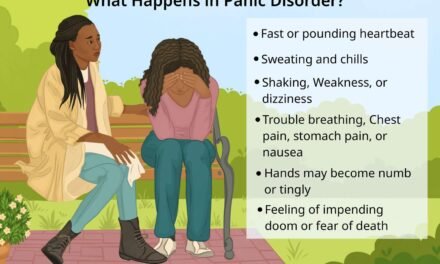Want to become a mental health technician?
The field shows promising growth with a 16% increase expected from 2024 to 2034, which outpaces most other occupations. The next decade will bring about 21,200 job openings annually. The demand seems clear as 97% of counties need more mental health professionals.
The numbers look good with yearly earnings of $42,200 (or $20.29 per hour), but there’s more to this career than attractive statistics. New York exemplifies the job market with 789 psychiatric technician positions, both full-time and part-time. Mental health tech positions of all types need qualified professionals.
This piece reveals what life as a mental health tech really means. You’ll find the emotional side of the job, ways to get certified, and learn about daily tasks that training programs don’t cover well enough.
What does a mental health technician really do?
Image Source: CareRev
Mental health technicians are the backbone of mental health treatment facilities. They work directly with patients who have mental health disorders, developmental disabilities, or substance use issues. These professionals often become the first point of contact during crisis situations.
Daily responsibilities in different settings
Mental health technicians spend more time with patients than anyone else on the care team. They work around the clock in psychiatric hospitals and residential facilities, taking shifts at night, on weekends, and during holidays. The schedule looks different in outpatient settings like mental health offices and day treatment programs where hours are more standard.
Your day-to-day responsibilities will vary based on your work environment but typically include:
- Monitoring patient behavior and documenting observations
- Administering prescribed medications and checking vital signs
- Assisting patients with daily living activities like hygiene, meals, and dressing
- Leading or assisting with therapeutic and recreational activities
- Providing emotional support during challenging moments
- Transporting patients to appointments and therapy sessions
- Implementing crisis intervention when necessary
The job also involves completing admittance forms for new patients and acting as a point of contact for family members. You’ll join staff meetings to discuss patient progress. Some facilities trust mental health technicians to perform original patient evaluations that help determine treatment priorities.
How the role supports patient recovery
Mental health technicians play a vital role in recovery through their daily interactions with patients. They work with psychiatrists, psychologists, social workers, and counselors to create and follow treatment plans that match each patient’s needs.
These professionals notice subtle changes in patient behavior first, which could signal shifts in mental status. Their observations help the treatment team quickly adjust care plans. Mental health technicians also help develop and implement treatment strategies that cover patients’ psychosocial, emotional, intellectual, and physical needs.
Regular faces and routines create stability for vulnerable patients. Joe, a mental health technician, puts it well: “We hear and see what’s going on with the patients. I know I’m making a difference”.
Why this role is more than just support work
Mental health technicians might start in entry-level positions, but they act as “mental health paramedics” during crises. The job builds expertise in de-escalation, crisis management, and therapeutic communication – skills that job descriptions rarely mention.
These professionals now take on more clinical work. They run skills groups, provide psychoeducation, handle psychological testing, and lead group therapy sessions about mindfulness and DBT skills.
The role needs sharp observation skills, quick thinking, and emotional strength. Staying patient and compassionate while helping distressed individuals becomes second nature. The work can be physically and emotionally challenging. Yet helping someone on their path to mental wellness creates meaning that goes beyond typical support work.
Mental health technician vs psychiatric technician: What’s the difference?
Image Source: Los Angeles Outpatient Center
Job seekers often mix up the titles “mental health technician” and “psychiatric technician.” These roles aren’t the same, and their differences can substantially affect your career path and daily work life.
Key differences in job duties
Mental health technicians and psychiatric technicians share some responsibilities, but their main roles are quite different. Mental health technicians focus on psychological and emotional support. They help with daily activities and run therapeutic programs. Their job involves direct patient care and emotional support.
Psychiatric technicians handle more clinical tasks. They give medications, do health checks, and help with medical procedures under supervision. The job needs more detailed documentation about patient progress. Some states require psychiatric technicians to have extra education and licenses compared to mental health technicians.
The core team’s independence levels also set these roles apart. Psychiatric technicians work more independently with treatments. Mental health technicians need closer oversight from nurses or healthcare staff. This comes from the extra medical training psychiatric technicians receive.
Work environments and patient types
These professionals work in different places. Mental health technicians usually work in:
- Community mental health centers
- Outpatient behavioral health clinics
- Group homes
- Addiction treatment facilities
- School-based programs
You’ll find psychiatric technicians in:
- State and private psychiatric hospitals
- Acute psychiatric units in general hospitals
- Forensic psychiatric facilities
- Specialized treatment centers for developmental disabilities
Mental health technicians help people with depression, anxiety, substance use disorders, and mood disorders. Their patients often have less severe symptoms or need ongoing care.
Psychiatric technicians work with patients who have more serious conditions like schizophrenia or acute bipolar episodes. Some patients need court-ordered treatment. The job involves higher-risk situations, such as managing aggressive behavior or using restraint protocols when needed.
Which path fits your goals?
Your choice between these careers depends on what you want. The mental health technician role might be your best fit if you love providing emotional support and building patient relationships. This path offers varied work settings and better schedules.
If medical aspects of psychiatric care interest you and you prefer clinical settings, becoming a psychiatric technician could help you achieve your goals. The extra clinical duties and education requirements often mean better pay.
Think about your future career too. Psychiatric technician jobs can lead straight to nursing or advanced clinical roles. Mental health technician positions are great stepping stones to counseling, social work, or recreational therapy.
Your comfort with crisis situations matters. Both jobs face challenges, but psychiatric technicians handle more acute psychiatric emergencies that need quick clinical decisions.
Both careers let you make real changes in patients’ lives, just in different ways and settings.
What nobody tells you about being a mental health tech
Image Source: Ontario COVID-19 Science Advisory Table
Mental health technicians face hidden challenges that glamorized media portrayals rarely show. Their daily frontline work in psychiatric care reveals realities that most training programs minimize or completely miss.
Emotional toll and burnout risks
Studies show alarming burnout rates among mental health professionals – 13% of behavioral health providers experience compassion fatigue or burnout. The numbers paint an even grimmer picture for trainees, with 49% experiencing burnout. This exhaustion affects both the provider and their therapeutic effectiveness. Patients can suffer harm from inappropriate behaviors that stem from provider burnout.
Human suffering, aggression, fear, and despair make this work emotionally draining. Mental health professionals working in trauma-focused settings often experience “vicarious traumatization” or “secondary victimization”. They absorb the emotional weight of their patients’ crises.
The importance of boundaries and self-care
Mental health technicians need strong boundaries between work and personal life – it’s both a clinical and ethical necessity. Many professionals put their own care last instead of making it a priority.
Setting effective boundaries means:
- Having fixed work hours and days
- Keeping work emails and notifications away during personal time
- Creating separate spaces for work and relaxation
Research shows poor work-life balance leads to exhaustion and anxiety. Better balance helps reduce emotional exhaustion and brings greater career satisfaction.
Unexpected skills you’ll develop on the job
Your role as a mental health technician will help you grow in surprising ways. Emotional resilience tops the list – you’ll learn to manage your emotional responses while keeping a balanced mindset. This inner strength helps you stay calm during crises and maintain professional boundaries.
You’ll become skilled at crisis intervention, learning de-escalation techniques that use calm tones, give space, or offer choices to help patients regain control. These abilities enhance both your professional and personal relationships.
The most valuable skill might be adaptability. Each person’s mental health challenges need a unique approach. Quick adjustments become second nature. This flexibility proves valuable in many situations and future career paths.
How to become a certified mental health technician
Image Source: National Career Certification Board
Starting a career as a mental health technician requires understanding education requirements and certification options. This career path offers a quick entry into healthcare with simple education requirements, making it a great choice for people who want to start their careers quickly.
Education and training options
You need a high school diploma or GED to qualify for entry-level positions. Your educational journey can take different paths from there:
- Some facilities hire high school graduates and provide training on the job
- Employers often prefer candidates who have a certificate or associate degree in mental health or similar fields
- Programs covering psychology, pharmacology, and behavioral management give you the knowledge you need
- Your application becomes stronger with practical experience from volunteering or internships at mental health facilities
Training on the job is a vital part of becoming a mental health technician. This period teaches you specific facility procedures, patient care methods, and equipment usage.
Certifications like CMHT and their value
Certifications make you more marketable, even though they aren’t always required nationwide. Two main certifications lead the field:
Certified Mental Health Technician (CMHT) – This credential verifies your expertise in mental health care and shows employers you can handle patient support duties. The CMHT exam tests your essential skills and gives you nationally recognized credentials.
Nationally Certified Psychiatric Technician (NCPT) – This specialized certification shows your expertise in psychiatric care.
Basic Life Support CPR certification is needed for most positions. Many facilities also require de-escalation and crisis intervention training.
How long it takes to get started
Your timeline depends on your chosen educational path and state rules. Here’s what you can expect:
- High school diploma path: A few months to find work and complete on-the-job training
- Certificate programs: 6-12 months (600 hours of training)
- Associate degree: 1-2 years
- Certification prep and testing: Extra time based on your preparation
You can enter this field within 1-2 years. Some fast-track programs let you finish in just 8 months.
Career outlook and salary expectations
Image Source: ZipRecruiter
Mental health technicians have a bright future ahead with steady career growth and good pay. Let’s get into what you can expect if you choose this path.
Mental health technician salary by state
The Bureau of Labor Statistics reports that psychiatric technicians earned a median annual wage of $42,590 in May 2024. Psychiatric aides made about $41,590. Your earnings can vary by a lot based on where you work. Top-paying states like California, District of Columbia, and Connecticut offer between $55,670 and $64,820.
Mental health technicians make around $19 per hour across the country. The pay range goes from $11.54 to $28.61 for travel positions. New York City stands out with some roles paying $50 to $60 per hour for both part-time and full-time work.
Job growth and demand in 2025 and beyond
The future looks bright for mental health technicians. Jobs in this field should grow 16% from 2024 to 2034, which beats most other careers. This means about 21,200 new jobs will open up each year over the next decade[203].
Psychiatric technicians are among the fastest-growing jobs with 20% expected growth between 2024-2034. This boom comes from people’s growing awareness of mental health’s importance and the rising need for complete services in healthcare.
Where to find mental health technician jobs near you
Right now, 52,470 mental health technicians work across the United States, with 103,710 open positions nationwide. States like Massachusetts, District of Columbia, and Minnesota have the highest concentration of these jobs.
You’ll find jobs in hospitals, residential treatment centers, outpatient clinics, and community mental health centers. The pandemic has pushed up the need for mental health services, which creates many more opportunities in this field.
Conclusion
A career as a mental health technician brings both challenges and deep rewards. This piece has shown you the many sides of this role – from your daily duties and certification needs to real talk about emotional demands.
Mental health technicians face some tough hurdles without doubt. Burnout and emotional fatigue top the list. In spite of that, few jobs let you help people so directly when they’re most vulnerable. Your support plays a key role in each patient’s recovery.
The field’s future looks bright with 16% growth expected through 2034. The average salary stands at $42,200 yearly. On top of that, you can start with basic education and build your career from there.
Your emotional strength and ability to set boundaries will determine your success in this field. These skills matter most for staying power in the profession. Mental health technicians who keep healthy work-life limits tend to stay longer and feel more satisfied.
Your choice between becoming a mental health technician or psychiatric technician depends on what interests you and where you want your career to go. Both paths help you make valuable contributions to mental healthcare while building skills useful in many areas of life.
The mental health field just needs a lot from its workers. Yet people who excel in this work often say it gives them real purpose – something rare in today’s job market. Your interest in this career shows you understand mental health’s growing importance and want to be part of the solution.
FAQs
Q1. What are the main responsibilities of a mental health technician?
Mental health technicians primarily monitor patient behavior, administer medications, assist with daily living activities, lead therapeutic activities, provide emotional support, and implement crisis intervention when necessary. They often have the most direct patient contact on the care team.
Q2. How does the role of a mental health technician differ from a psychiatric technician?
Mental health technicians focus more on psychological and emotional support, while psychiatric technicians have more clinical responsibilities. Psychiatric technicians often administer medications, perform health checks, and work more independently, typically requiring more formal education and licensing in some states.
Q3. What are the educational requirements to become a mental health technician?
The minimum requirement is typically a high school diploma or GED. However, many employers prefer candidates with a certificate or associate degree in mental health or related fields. On-the-job training is also crucial for new mental health technicians.
Q4. What is the job outlook for mental health technicians?
The career outlook is strong, with employment projected to grow 16% from 2024 to 2034, much faster than average. This translates to approximately 21,200 job openings annually over the next decade, driven by increased recognition of mental health’s importance.
Q5. What are some challenges mental health technicians face in their work?
Mental health technicians often face emotional toll and burnout risks due to exposure to human suffering and crises. Maintaining work-life balance and setting boundaries are crucial. The role can be physically and emotionally demanding, requiring resilience and strong coping skills.





